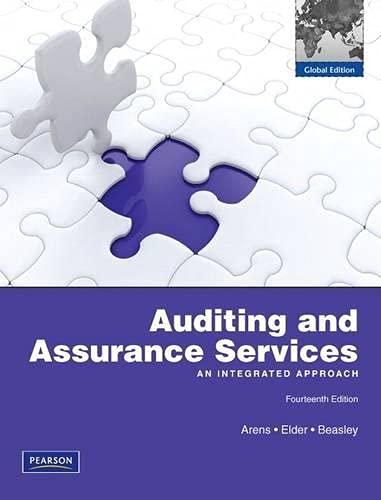Question
1. Patel and Sons Inc. uses a standard cost system to apply factory overhead costs to units produced. Practical capacity for the plant is defined
1. Patel and Sons Inc. uses a standard cost system to apply factory overhead costs to units produced. Practical capacity for the plant is defined as 55,800 machine hours per year, which represents 27,900 units of output. Annual budgeted fixed factory overhead costs are $279,000 and the budgeted variable factory overhead cost rate is $3.90 per unit. Factory overhead costs are applied on the basis of standard machine hours allowed for units produced. Budgeted and actual output for the year was 21,700 units, which took 44,800 machine hours. Actual fixed factory overhead costs for the year amounted to $267,000 while the actual variable overhead cost per unit was $3.80.
Based on the information provided above, calculate the following factory overhead variances for the year. Indicate whether each variance is favorable (F) or unfavorable (U). (Do not round intermediate calculations. Round your final answers to nearest whole dollar amount.)
2. Patel and Sons Inc. uses a standard cost system to apply factory overhead costs to units produced. Practical capacity for the plant is defined as 55,800 machine hours per year, which represents 27,900 units of output. Annual budgeted fixed factory overhead costs are $279,000 and the budgeted variable factory overhead cost rate is $3.90 per unit. Factory overhead costs are applied on the basis of standard machine hours allowed for units produced. Budgeted and actual output for the year was 21,700 units, which took 44,800 machine hours. Actual fixed factory overhead costs for the year amounted to $267,000 while the actual variable overhead cost per unit was $3.80.
Based on the information provided above, provide an appropriate end-of-year closing entry for each of the following two independent situations: (a) the net factory overhead cost variance is closed entirely to Cost of Goods Sold (CSG), and (b) the net factory overhead variance is allocated among WIP Inventory, Finished Goods Inventory, and CGS using the following percentages: 10%, 20%, and 70%, respectively. (Do not round intermediate calculations. Round your final answers to nearest whole dollar amount. If no entry is required for a transaction/event, select "No journal entry required" in the first account field.)
- Record the net variance closed to cost of goods sold.
- Record the net variance allocated to ending inventories and Cost of goods sold.
3. Clark Companys master budget includes $384,000 for equipment depreciation. The master budget was prepared for an annual volume of 64,000 chargeable hours. This volume is expected to occur uniformly throughout the year. During September, Clark performed 5,600 chargeable hours and recorded $32,500 of depreciation.
1. Determine the flexible-budget amount for equipment depreciation in September.
2. Compute the spending variance for the depreciation on equipment. Was the variance favorable (F) or unfavorable (U)? (Leave no cell blank; if there is no effect enter "0" and select "None" from dropdown.)
3. Calculate the fixed overhead production volume variance for depreciation expense in September. Was this variance favorable (F) or unfavorable (U)? (Leave no cell blank; if there is no effect enter "0" and select "None" from dropdown.)
4.
Walkenhorst Companys machining department prepared its 2022 budget based on the following data:
| Practical capacity | 40,000 | units |
|---|---|---|
| Standard machine hours per unit | 2 | |
| Standard variable factory overhead | $ 3.00 | per machine hour |
| Budgeted fixed factory overhead | $ 376,000 |
The department uses machine hours to apply factory overhead to production. In 2022, the department used 85,200 machine hours and incurred $637,000 in total manufacturing overhead cost to manufacture 42,010 units. Actual fixed overhead cost for the year was $386,000.
Required:
Determine for the year:
1. The fixed, variable, and total factory overhead application rates (per machine hour). (Round your answers to 2 decimal places.)
2. The total flexible budget, for factory overhead cost based on output achieved in 2022.
3. The production volume variance. State whether this variance was favorable (F) or unfavorable (U).
4. The total overhead spending variance. State whether this variance was favorable (F) or unfavorable (U).
5. The overhead efficiency variance. State whether this variance was favorable (F) or unfavorable (U).
6. The variable overhead spending variance and the fixed overhead spending variance. State whether each variance is favorable (F) or unfavorable (U).
Step by Step Solution
There are 3 Steps involved in it
Step: 1

Get Instant Access to Expert-Tailored Solutions
See step-by-step solutions with expert insights and AI powered tools for academic success
Step: 2

Step: 3

Ace Your Homework with AI
Get the answers you need in no time with our AI-driven, step-by-step assistance
Get Started


